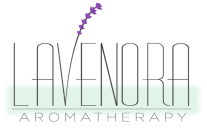History
Lavender has a long history and dates back at least 2,500 years. In ancient Egypt, Lavender was used as perfume and for mummification. In ancient Rome, Lavender oils were used to scent the air, to cook, and for baths. The Latin root may possibly derive from those times. Lavare meaning to wash and Livendula meaning livid. During the middle ages, the dried lavender was thrown on the ground or the floor to fumigate the homes. During the middle ages, lavender was most commonly used by monasteries. By the time Henry VIII dissolved the monasteries, lavender moved into the gardens of domestic homes. Women used it to give their lines a fresh scent. Sachets were made and placed between clothing. During the 16th century in France, lavender was used against infections. Some stories differ but during the time of the great plague, thieves stole herbs and oils and it is said that amongst Clove, Lemon, Cinnamon, Eucalyptus and Rosemary, it is said that they also stole lavender. The stories go that the thieves that stole the herbs and oils did not get sick and were spared from the disease. Then, during WW II, lavender was used to disinfect the floors and walls of hospitals. Doctors also used lavender as a first aid for burns.
ProductionLavender Essential Oils is steam-distilled from the flowering tops. It is used for a variety of purposes, from physical to mental and emotional.
|
Aromafloral, herbaceous, sweet, and fresh.
|
NoteMiddle
|
Common Uses
- Nervous System: Anxiety, depression, nervous tension, headaches, migraines
- Sleep: Insomnia, difficulty falling asleep
- Pain Relief: Burns, sunburns, sores, muscle cramps, menstrual problems (PMS), rheumatism, sprains, backaches, headaches, migraines
- Circulatory System: High blood pressure, arteriosclerosis
- Respiratory System: coughs, asthma, whooping cough, colds, flu, throat infections, sinus infection, bronchitis, tonsillitis, laryngitis
- Hair and Skin: hair loss, scarring, psoriasis, eczema, acne, perinial repair, stretch marks, wrinkles, sunburns
Properties
antiseptic, antifungal, analgesic, antitumoral, anticonvulsant, vasodilating, relaxant, anti-inflammatory, reduces blood fat/cholestorol, combats excess sebun on skin.
Emotional Healing
Lavender aids communication and helps when feeling rejected, unseen or unheard. When one feels so much tension from hiding ones true self, lavender encourages emotional honesty.
Application Suggestions
- Rub a few drops of lavender oil on your feet for a calming effect on the body. Try this is you suffer from insomnia or any sleep problems.
- Drop 2 drops into the palm of your hands and rub over your pillow before you go to sleep for a good nights rest.
- When feeling stressed out, drop 1 or 2 drops of lavender into your hand, rub your hands together to release the aroma, cup your hands over your nose and inhale deeply at least 3-5 times.
- Diffuse lavender to stimulate calmness as well as support your body's natural defense system. Great during flu or cold seasons!
- Drop one or two drops on a minor burn or several drops over sunburn. It helps soothe the burn. Repeat every 15-20 minutes for at least 4 applications.
- Apply this oil neat (undiluted) on to a rash or eczema to sooth the itchiness. Mix a few drops into your favorite cream to give your skin an extra boost of calming, relaxing, and invigorating support.
- Drop a few drops of lavender EO on or around a new scare to eliminate the formation of scar tissue.
- One or two drops on mosquito bites or bee stings reduce the itchiness.
Noteworthy
True Lavender is often extended with hybrid lavender or synthetic linalol and linalyl acetate. 40/42 in Lavender means that the oil is a combination of natural lavender oils (and/or synthetic chemicals - linalool and linalyl acetate). The Association French Normalization Organization Regulation (AFNOR) standards for Lavender are very strict; the level of linalool should be in the range of 25 - 38%, and the level of linalyl acetate should be in the range of 25 - 34%. Keep this in mind when buying Lavender Essential Oils. If the company does not specify the percentage, call or e-mail them to find out. If it is not within this range, I do not recommend using it for cream making. Many oils are a hybrid form containing Lavandin and this adulterated version is much cheaper but not as safe to use and I do not recommend it for aromatherapy as it may cause headaches and I certainly cannot recommend it to be used topically
References
- Butje, A. Aromahead Institut, USA; http://www.aromahead.com
- MacDonald, D. Emotional healing with essential oils. Enlighten Alternative Healing, LLC., USA, 2012
- Schnaubelt, K.The healing intelligence of essential oils - The science of advanced aromatherapy. Healing Arts Press, USA, 2011
- Williams, K. Aromatics International, USA; http://www.aromaticsinternational.com

